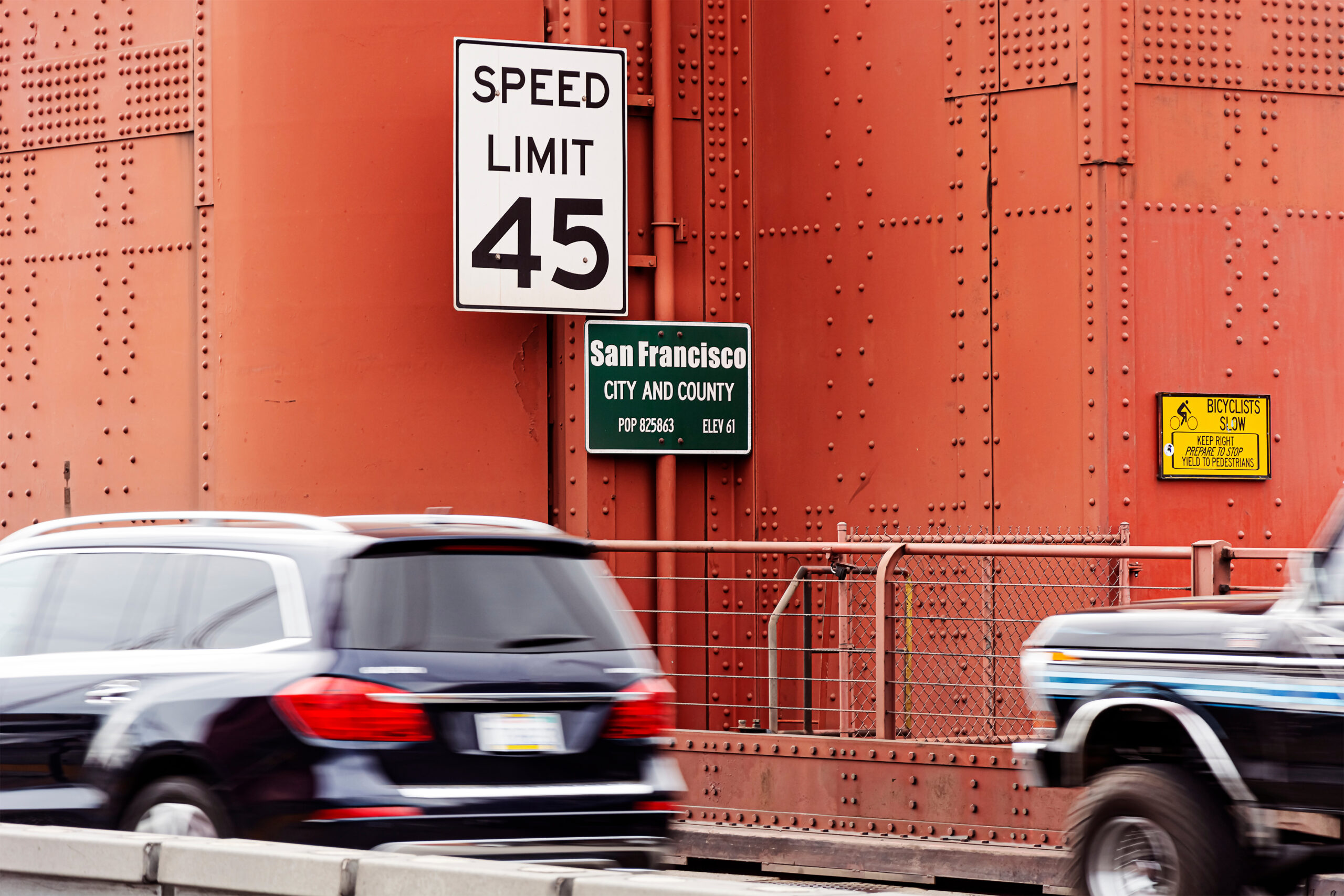The San Francisco Municipal Transportation Agency board has voted to cut speed limits from 25 mph to 20 mph on nearly two dozen single-block and multiblock stretches of streets in key business districts.
But whether the new limits will have any real-world impact on traffic injuries or deaths remains unclear—the agency’s own report on similar earlier attempts to reduce speeds for safety reasons showed that drivers did not comply with the limits and overall speeds remained the same.
The transit agency is set to vote on the changes during a Tuesday afternoon meeting.
The affected districts would include seven streets in the Fisherman’s Wharf neighborhood, seven in the Union Square shopping district, five in Chinatown and four in North Beach. Total costs for the changes were estimated at around $400,000.
In January 2022, the city lowered speed limits for 20 miles of streets along 28 corridors and installed more than 300 signs indicating the revised limits. A new state law passed in 2021 allowed the city to make those changes.
But in a June follow-up on what effect the lower speed limits were having, Muni staff said there was a 21% drop in the share of drivers complying with the posted speed limits.
Furthermore, the agency recorded virtually no change in typical daily vehicle speeds across the streets where the lower speed limits were implemented. And speeds actually went up on four of the streets among drivers traveling at the upper tier of the speed limit, rising on Ocean, Fillmore, Polk and San Bruno streets.
“Although the speed limit reduction had little effect in reducing vehicle speeds, prevailing speeds in the pre- and post-implementation scenarios indicated that most drivers drive at or below the speed limit,” the agency said.
The agency’s report also said the lower speed limits did not reduce the share of cars engaged in “egregious speeding.” However, the agency added that “not many vehicles were egregiously speeding” before the limits were lowered.
“The data collection showed on all but one street studied, Third Street, that the vast majority of drivers already drive at or under 20 mph,” said transit agency spokesperson Stephen Chun. “For streets where speeds are still above 20 mph, we agree that more engineering tools can be used to reinforce the need to reduce speed and we’ll be working on Quick Build improvements and road diets on many of the streets.”
In a March update to Muni’s Vision Zero initiative, which aims to end traffic fatalities in San Francisco, transit staffers noted the city had imposed 15 mph zones around nearly 200 public and private school campuses in 2011 and did the same around senior citizens’ centers and senior living sites in 2020.
Despite the Vision Zero initiative, San Francisco recorded 39 traffic fatalities in 2022, the highest number in at least a decade. There were 27 deaths in 2021 and 30 in 2020. In the first six months of 2023, there were 11 traffic fatalities.
Luke Bornheimer, a transportation activist, questioned why Muni is focusing so much effort and money on lowered speed limits, given that the data show many drivers do not comply with the lower limits. He added that police enforcement of traffic rules was “essentially nonexistent.”
The San Francisco Police Department did not immediately respond to requests for comment on traffic enforcement.
Bornheimer said the city should take a different approach.
“The most effective way to reduce vehicle speeds is to reduce travel lanes—by installing protected bike lanes, for example—and install physical infrastructure in the roadway to make it impossible to drive fast,” Bornheimer said, adding that “reducing speed limits with signs only does nothing.”
The 23 streets that will see new lower speed limits are:
- Beach Street, five blocks between Taylor and Polk streets in Fisherman’s Wharf
- Broadway, four blocks between Montgomery and Powell streets in North Beach
- Bush Street, two blocks between Montgomery Street and Grant Avenue in Union Square
- Clay Street, three blocks between Montgomery and Stockton streets in Chinatown
- Cyril Magnin Street, three blocks between Market and O’Farrell streets in Union Square
- Eddy Street, a block between Cyril Magnin and Mason streets in Union Square
- Ellis Street, three blocks between Market and Mason streets in Union Square
- Green Street, a block between Grant Avenue and Powell Street in North Beach
- Jackson Street, a block between Kearny and Powell streets in Chinatown
- Jones Street, a block between Beach and Jefferson streets in Fisherman’s Wharf
- Kearny Street, four blocks between Market and Pine streets in Union Square
- Larkin Street, a block between North Point and Beach streets in Fisherman’s Wharf
- Leavenworth Street, a block between Beach and Jefferson streets in Fisherman’s Wharf
- Mason Street, a block between Beach and Jefferson streets in Fisherman’s Wharf
- O’Farrell Street, four blocks between Market and Mason streets in Union Square
- Pacific Avenue, four blocks between Kearny and Powell street in Chinatown
- Powell Street, a block between Beach and Jefferson streets in Fisherman’s Wharf
- Sacramento Street, two blocks between Kearny and Stockton streets in Chinatown
- Sutter Street, six blocks between Market and Mason streets in Union Square
- Taylor Street, three blocks between Bay and Jefferson streets in Fisherman’s Wharf
- Union Street, a block between Stockton and Powell streets in North Beach
- Vallejo Street, three blocks between Grant Avenue and Powell Street in North Beach
- Washington Street between Kearny and Stockton streets in Chinatown
When asked for comment on why the city was attempting to make these changes given the apparent ineffectiveness of similar programs, a representative did not immediately respond.
